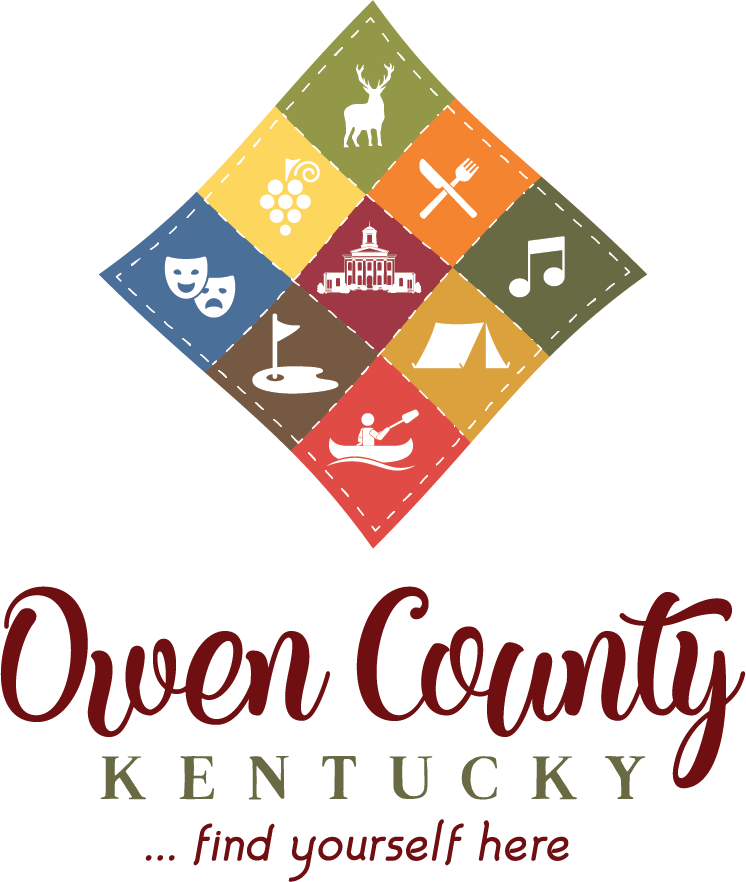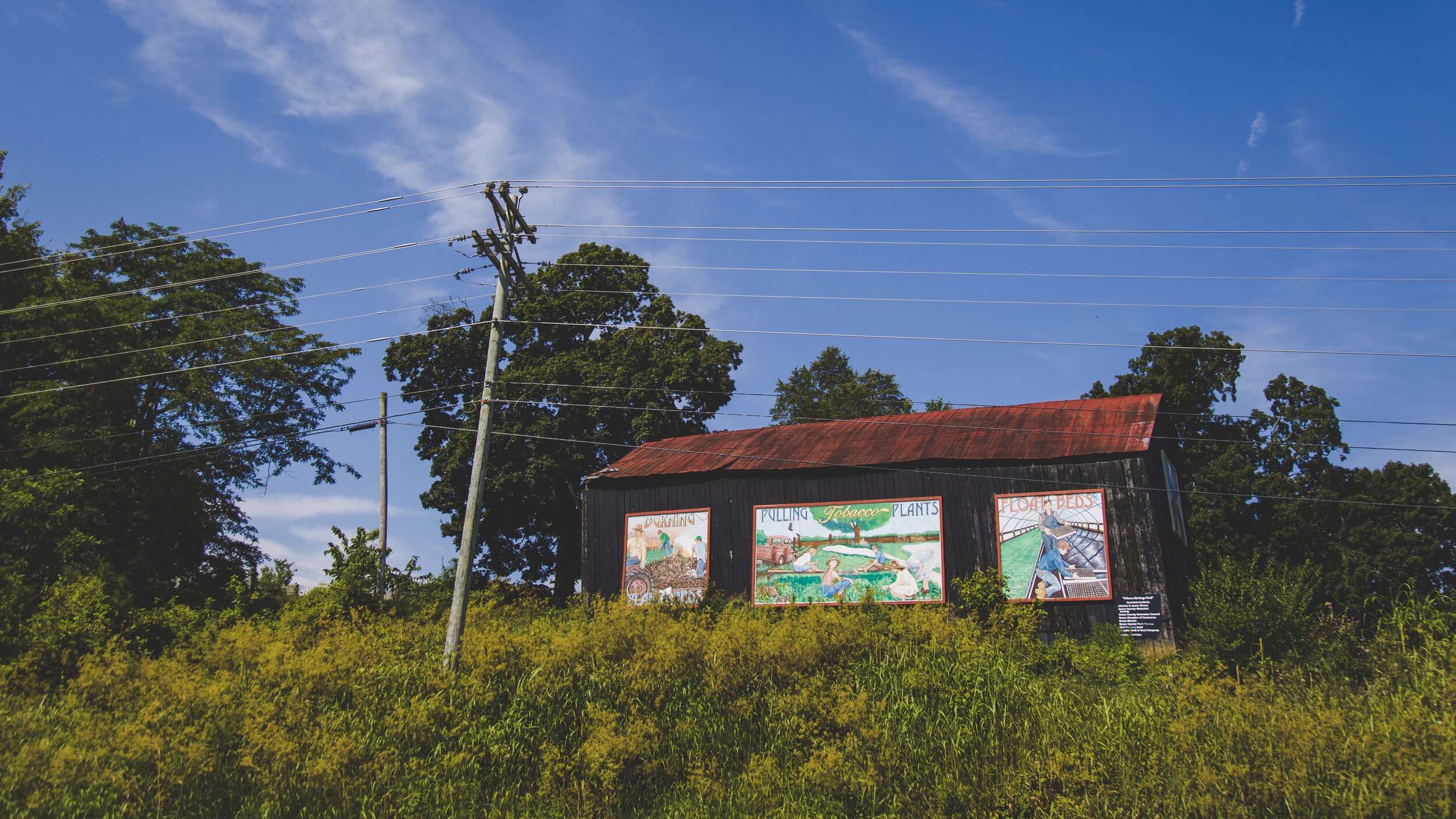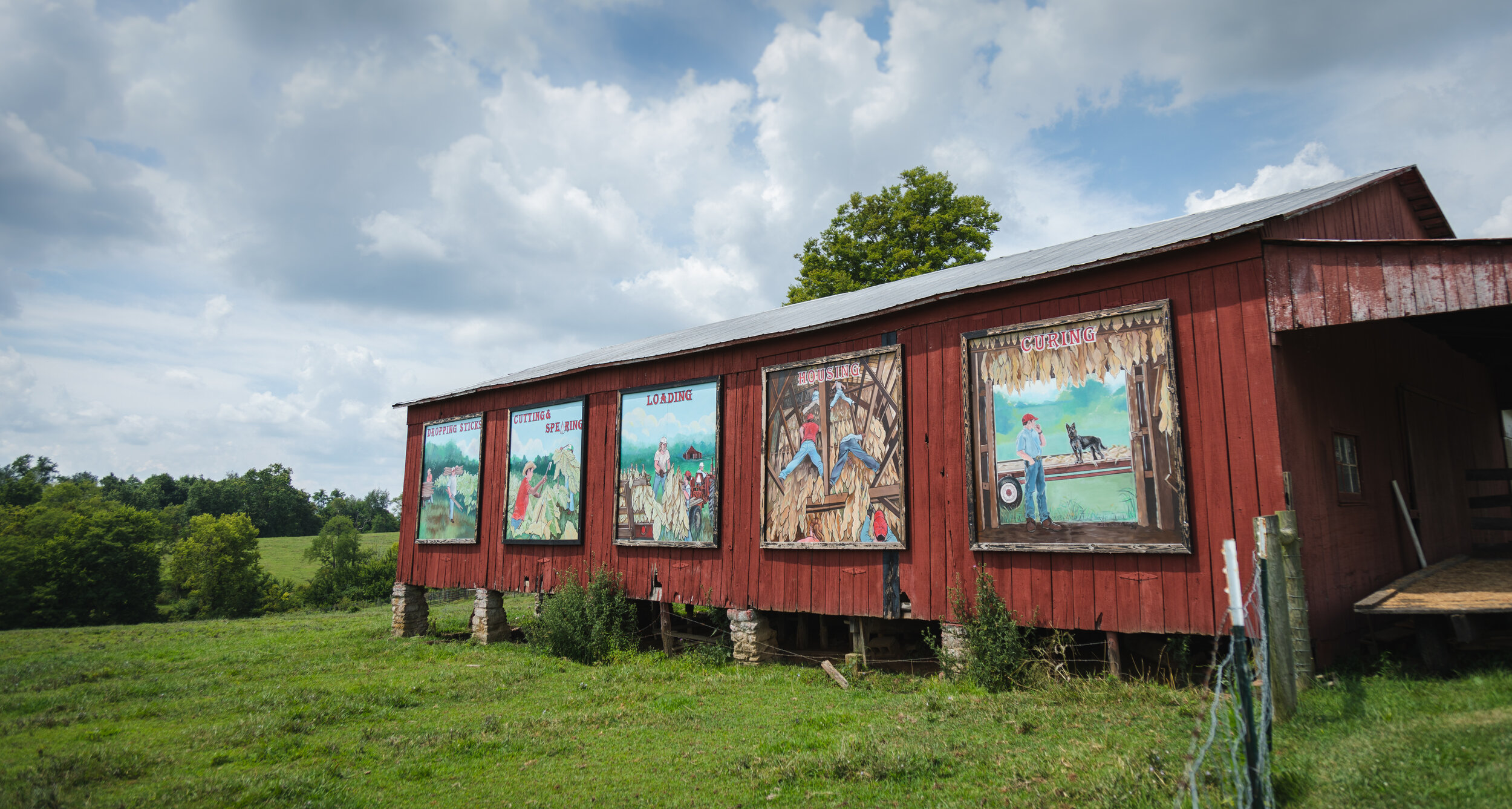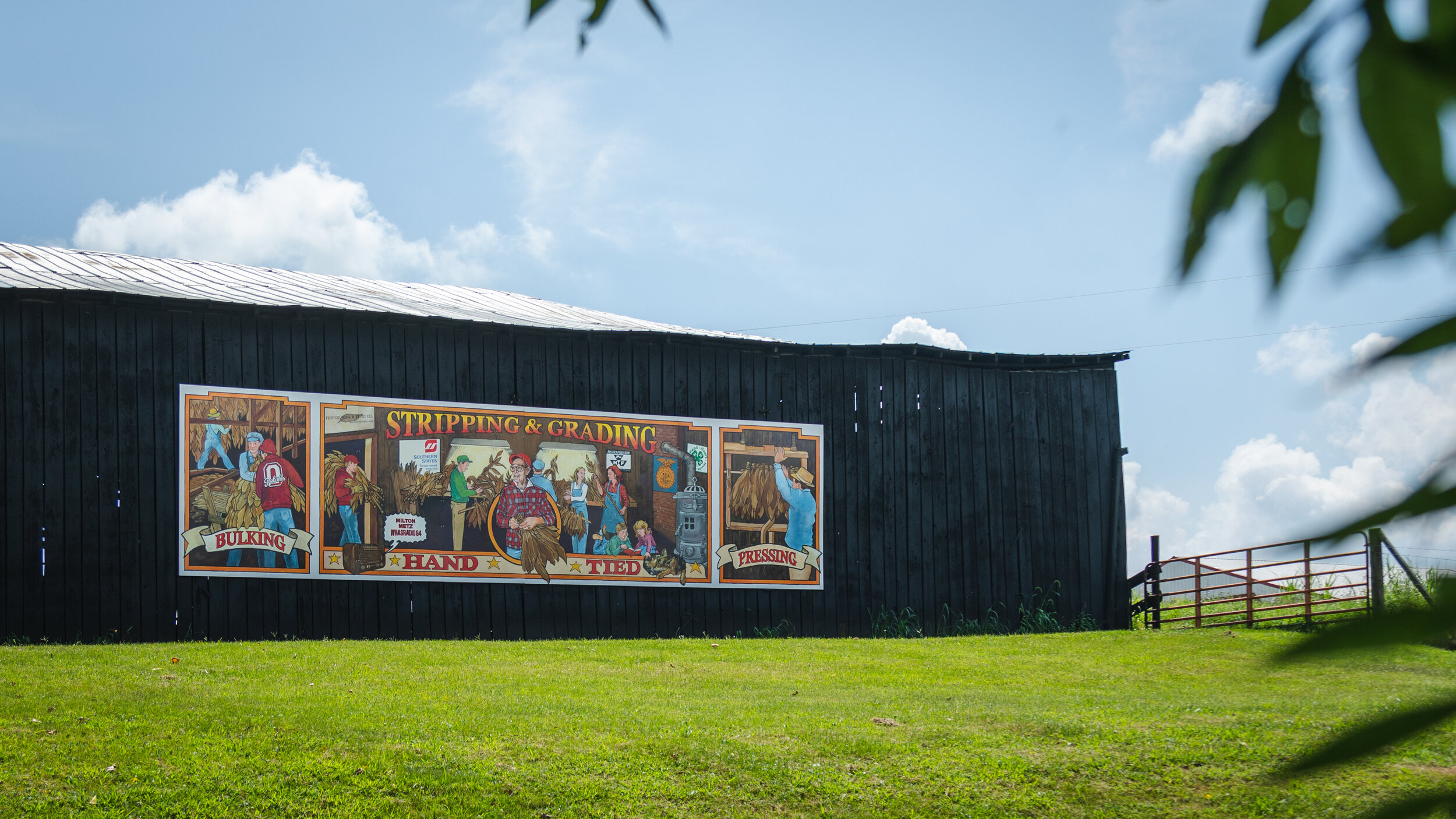Owen Co.
Barn Murals
Hear the Historic Stories of Owen Co. Farmers
Introduction to Tobacco
Owen County was and continues to be a rural agricultural community. However, the time of raising tobacco on small family farms is gone. These oral histories are indicative of the fact that roots run deep on the family farm. It is our hope that if you aren’t familiar with farming that you will develop an appreciation for the sense of pride and hard work of farmers. If you have an understanding of farming, it is our hope that these oral histories will encourage you to share your story with family and friends. It is our passion to bridge the gap from the past to the future as we honor our farm families.
Bicentennial Mural
This mural celebrates Owen County’s Bicentennial (1819-2019) while showing the importance of the Kentucky River in early tobacco production. Stripped tobacco was packed in large wooden barrels called hogsheads and prized (pressed). There were prizing barns located throughout the county where farmers brought their tobacco to be packed in the hogsheads. A few of these prizing barns exist today and are truly historical structures. The hogsheads were then taken to be loaded on the Falls City steamboat at the Kentucky River in Owen County for transport to other cities and states. This mural shows Captain Samuel Adams who was a native of our county and a panel showing the Kentucky River.
Farm to Table Mural
Our Farm to Table mural deviates from the tobacco production story. It features a collage of what makes Owen County such a special place. It serves as a lovely welcome to Owen County and highlights the “Farm to Table” theme. The collage features luscious fruits and vegetables, beautiful flowers, wine, dairy barn and cows, sheep, lovely rolling hills and the country church. All are part of Owen County and represent the diversity of our agricultural history. Look closely to find the heart hidden in the mural because, after all, Owen County is in the heart of the Golden Triangle comprised of the large urban areas of Cincinnati, Louisville & Lexington.
Growing & Pulling Plants Mural
Growing plants is the first step in the production of tobacco. This mural features three framed images to describe this process. Burning Plant Beds was done in the spring to prepare the beds to sow the tobacco seeds that would grow into plants. Pulling Plants was a dreaded job as it required sitting on a narrow board across the plant bed to pull weeds and then plants that would be set in the field. Plant beds were covered with canvas to protect the plants. Float beds began in the late 1990s by growing plants in a greenhouse in plastic trays. Plants are transported in the trays to the field for planting.
Tobacco Setting Mural
This mural is number two in the production of tobacco and features four vignettes showing the progression through the years of setting of tobacco. “Setting by the Season” was done by placing the plant in the ground with your fingers or a wooden peg. “Setting with Hand-Held Jobber” required two people; one to operate the jobber and one to place the plant in the jobber. “Horse Drawn Setter” was much improved but short on comfort as the workers were dragged along the ground. “Setting with the Tractor” increased productivity and speed of setting. It is still done today usually with four or more workers instead of two.
Cultivation Mural
Tobacco cultivation is number three in the production process and is presented in three panels. Plowing/cultivating was done with horse-drawn plow in the early days and a tractor in more recent times. It is done when the plants are small and fertilize is added to stimulate growth. Chopping our Tobacco shows a family chopping and removing the weeds. This job was dreaded by most children and adults. Topping tobacco was done by walking through the field and using your hands to remove the flowers from the top of each plant. The Hi-boy sprayer was driven through the field and its long arms sprayed the tobacco with chemicals to prevent suckers from growing. Irrigation systems allowed farmers to pipe water to the fields during the hot, dry summer months.
Cutting & Housing Mural
Cutting and housing is number four in the production process and is shown in five panels. Cutting & housing was done in August and early September. It was hard, hot, dirty and back-breaking work. Sticks were dropped in the field so the cutters could have easy access to them. The cutters would push a tobacco stick in the ground so it was standing vertical and place a sharp, metal spear on top of the stick. He would then use his tomahawk (a tool with a wooden handle and sharp blade) to cut the individual stalks of tobacco and spear them on the stick. Workers would pick up the sticks of tobacco, load them on a wagon and take them to the barn for housing. Workers would hang the tobacco sticks on the tiers in the barn and the curing process would begin.
Bulking & stripping mural
Bulking and stripping tobacco is number five in the tobacco production process. Farm families knew they were getting close to seeing their yearly paycheck when they started stripping tobacco. Tobacco was bulked (thrown down out of the barn and stacked in piles). It was then carried into the stripping room, placed on the table and all the leaves were stripped from the stalk. Tobacco was commonly stripped in three grades determined by the quality of the leaves on the stalk. Leaves were tied into hands, placed on a tobacco stick and pressed by a wall press. Baling tobacco has replaced the wall press. Stripping usually started in October and lasted until all tobacco had been stripped.
To market mural
This is the final step in the tobacco production process and is the day all farm families worked toward. This mural features the tobacco market in the glory days of the 1950s-1960s when farmers would take their stripped tobacco to market and watch it sell. It features five framed images – Unloading, Packing, Weighing, Selling and Pay-Day. Farmers took great pride in their tobacco crops and made sure the tobacco was packed neatly on the tobacco baskets. They stayed at the market to watch their crop sell as the buyers made their way through the warehouse. This Pay-Day would ensure the farmers could pay their creditors, pay their tithes to church and have money for Christmas.
Want to hear more? Listen to the full interviews here.
About the Artist - These eight murals were painted by Carla Canonero Phillips. Carla graduated with a BFA in Painting and Art History from The School of the Art Institute of Chicago. She has been part of the Tobacco Heritage Trail Project since 2010. She is passionate about art and history. Carla hopes to give us a glimpse into the hard work and lives of tobacco farmers and their families. Visit CarlaCanonero.com to see a variety of her other works.
This website was developed with grant funding from the Kentucky Historical Society-Kentucky Oral History Commission.











